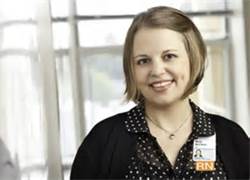It’s time to admit my deepest, darkest secret: I frequently visit an online dating service. I search the site and view the long list of prospects late at night when my wife and family are sleeping.
Unfortunately, it is almost impossible to find my perfect match, and what do I really know about my government-sponsored online dating service? In the morning, after a night of searching, I wake up tired and unsatisfied. However, when it comes to finding a match, I am totally committed to the search.
OK. Relax. And don’t call my wife. I’m talking about diabetes human trials and the lack of a user-friendly search application to make this less cumbersome for individuals who wish to find a match. Thankfully, this may all change soon thanks to the efforts of Ryan Luce and his company, Corengi, which provides a Clinical Options Research Engine to match open trials — for all types of chronic diseases — with the patients willing to participate in the search for a cure.
“That’s interesting that you used that term because we also see the need for an ‘eharmony’ search application,” Ryan Luce, the president and founder of Corengi, said during a recent telephone call. “Our goal is to simplify and improve the search process and to build a large database of qualified participants.” Ryan said the new online effort is a demonstration project focused on Type 2 diabetes with some financial support coming from an NIH grant and other investment capital.
Ryan said Corengi is committed to building a comprehensive, free, and open interactive platform that will allow stakeholders within the clinical trials community (investigators, site personnel, sponsors, and disease advocates) to engage with potential enrollees and educate them about specific clinical trials.
At this point, the Corengi App connects persons with Type 2 diabetes with open clinical trials — and it is quicker and easier to use than searching the government’s Clinicaltrials.org site. Ryan told me the interactive database has more than 400 Type 2 trials today and is growing daily. Offering a Type 1 diabetes search application, the one that I care about, will take a little longer to develop because there are more complex data variables to account for than in Type 2 trials ( i.e. does the patient wear an insulin pump, do they wear a CGM, when were they diagnosed, what is their A1c, etc.)
It is awesome to see that Corengi is close to launching a Type 1 clinical trials search engine. The need for this product is clear. If you make a diabetes online search or view my twitter page on any given day, you’ll see a lot of great trials are happening across the world. When you read these stories closer, however, you’ll also see a common theme: Researchers need more humans to participate in Type 1 and Type 2 diabetes clinical trials.
Finally, Ryan says the good news for Type 1 diabetics is that Corengi is not the only business pursuing this solution. “There is an entire industry growing up around this online recruitment idea, and we intend to be a part of the solution,” Ryan said.
Ryan spent most of 2000-2009 working for healthcare technology company NexCura, which was acquired by Thomson Reuters in 2005 and then sold to US Oncology at the end of 2009. NexCura has educational tools that are embedded on a variety of websites, including several of the most prominent advocacy groups. As Director of Product Development, he developed completely new product lines in clinical trial recruitment, market research, and physician messaging. Ryan earned his B.S. in Chemistry from Duke University in 1994 and his Ph.D. in Bio-Organic Chemistry from the University of Washington in 1999.
Ryan sounds like he’s got the technical and business savvy to make this application a success. As a clinical trial participant, I wish him continued success, and when he gets the Type 1 App ready, I’ll partner with him to post it here on WeRtheCure.com for everyone to check out. Thanks Ryan for using technology to produce better solutions and, hopefully, a cure for persons living with diabetes. Together, We R the Cure.







